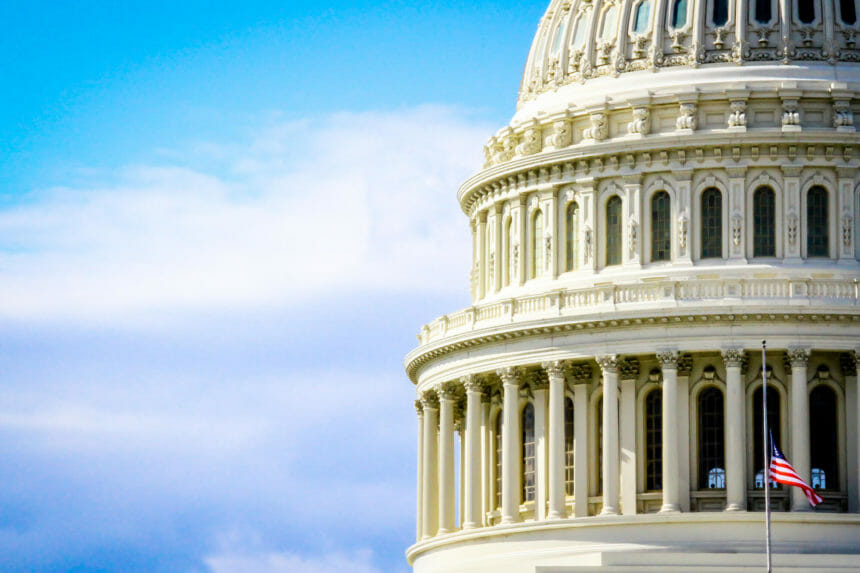
The $484 billion funding package passed by the Senate Tuesday afternoon to provide relief from the effects of COVID-19 contains $75 billion for personal protective equipment and other resources for hospitals, health systems and healthcare and frontline workers. It remains to be seen exactly who will benefit from the funding, however.
“The good news is that the $75B is not ‘hospitals,’ ” Farzad Mostashari, M.D., the former national coordinator for health information technology in the Department of Health and Human Services, tweeted Tuesday afternoon with an image of the apparent bill language that said that “eligible health care providers” included “public entities, Medicare or Medicaid enrolled suppliers and providers, and such for-profit entities … that provide diagnoses, testing, or care for individuals with possible or actual cases of COVID-19.” “Like CARES Act, it’s all providers, and we can hope that @SecAzar @SeemaCMS will continue to consider the needs of all providers who are on the frontlines,” Mostashari said, referring to HHS Sec. Alex Azar and Centers for Medicare & Medicaid Services Administrator Seema Verma.
Democrat and Republican leaders each took credit for the funding package’s components and pointed fingers at one another for the legislation’s perceived shortcomings and for the delay in passage.
The bill, on which the House of Representatives is expected to vote on Thursday and President Trump could sign before the end of the week, also contains:
- $310 billion in additional funding for the Paycheck Protection Program loans for small businesses, $50 billion for Small Business Administration emergency disaster loans and $10 billion for SBA emergency disaster grants, and
- $25 billion for COVID-19 testing.
“CARES 2,” a follow-up to the $2.2 trillion Coronavirus Aid, Relief and Economic Security Act passed last month, reportedly will include more funding for state, local and tribal governments to pay essential workers in healthcare, police, fire, emergency medical services and transportation, as well as teachers and others.
Don’t overlook senior living in financial relief, bipartisan group asks
Senior living appears to have the support of a bipartisan group of 25 U.S. senators that last week asked that HHS guidelines for COVID-19 financial relief include those types of operators as well as nursing home providers.
The CARES Act provides more than $127 billion to the Public Health and Social Services Emergency Fund to support hospitals and other healthcare providers on the front lines of the COVID-19 response. In a letter to HHS Sec. Alex Azar, the lawmakers advised him not to overlook senior living — including independent living, assisted living, memory care and continuing care retirement communities — as well as nursing homes, skilled nursing facilities and operators who serve individuals with intellectual and developmental disabilities, as essential providers eligible for relief funds.
“Allocating a meaningful level of support from the PHSSEF to this industry is critical to the seniors who call these facilities home as we continue to take steps to reduce COVID-19 spread and support our healthcare providers on the front lines,” the letter read.
Senior living communities and nursing homes also are experiencing shortages in staffing and PPE, and a significant investment is needed to stave off these shortages, noted the letter, which was supported by the Argentum, the American Health Care Association / National Center for Assisted Living and the American Seniors Housing Association.
The average age of senior living community and nursing home residents, 85, puts residents in the group with the highest percentage of severe outcomes associated with COVID-19, according to the U.S. Centers for Disease Control and Prevention.
More testing needed before social distancing can be relaxed, governors say
States will need to be able to “significantly expand” their diagnostic and antibody testing capacity before governors can consider relaxing social distancing measures, the National Governors Association told the leaders of Congress in a letter Tuesday.
That capacity, they said, includes “an essential public health infrastructure to support contact tracing, surveillance, epidemiology, laboratory capacity, workforce, and community partnership.”
The governors also called on the federal government to improve transparency and access to PPE and medical supplies such as test kits and ventilators.
“States and territories are still struggling with accessing the needed PPE and medical supplies, with no clear explanation as to how supplies are being distributed,” the letter said. “We urge Congress to immediately create a federal centralized structure to ensure the transparency, accountability, and coordinated means of allocating PPE and critical medical supplies, including increasing the Strategic National Stockpile needs.”




